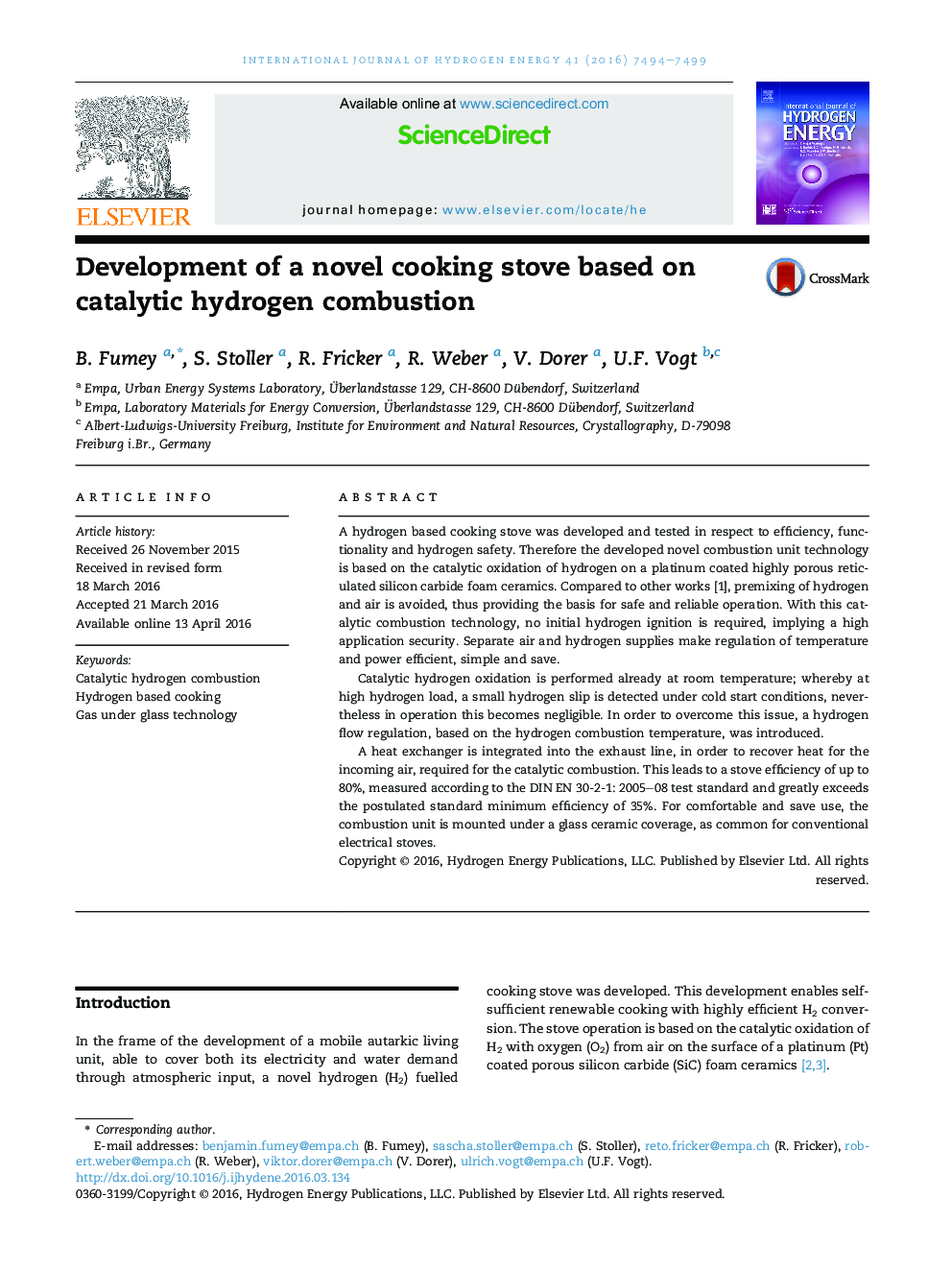| Article ID | Journal | Published Year | Pages | File Type |
|---|---|---|---|---|
| 1268702 | International Journal of Hydrogen Energy | 2016 | 6 Pages |
•Safe catalytic combustion of hydrogen for cooking.•Gas under glass stove top design.•High efficiency in conversion of hydrogen to heat.
A hydrogen based cooking stove was developed and tested in respect to efficiency, functionality and hydrogen safety. Therefore the developed novel combustion unit technology is based on the catalytic oxidation of hydrogen on a platinum coated highly porous reticulated silicon carbide foam ceramics. Compared to other works [1], premixing of hydrogen and air is avoided, thus providing the basis for safe and reliable operation. With this catalytic combustion technology, no initial hydrogen ignition is required, implying a high application security. Separate air and hydrogen supplies make regulation of temperature and power efficient, simple and save.Catalytic hydrogen oxidation is performed already at room temperature; whereby at high hydrogen load, a small hydrogen slip is detected under cold start conditions, nevertheless in operation this becomes negligible. In order to overcome this issue, a hydrogen flow regulation, based on the hydrogen combustion temperature, was introduced.A heat exchanger is integrated into the exhaust line, in order to recover heat for the incoming air, required for the catalytic combustion. This leads to a stove efficiency of up to 80%, measured according to the DIN EN 30-2-1: 2005–08 test standard and greatly exceeds the postulated standard minimum efficiency of 35%. For comfortable and save use, the combustion unit is mounted under a glass ceramic coverage, as common for conventional electrical stoves.
